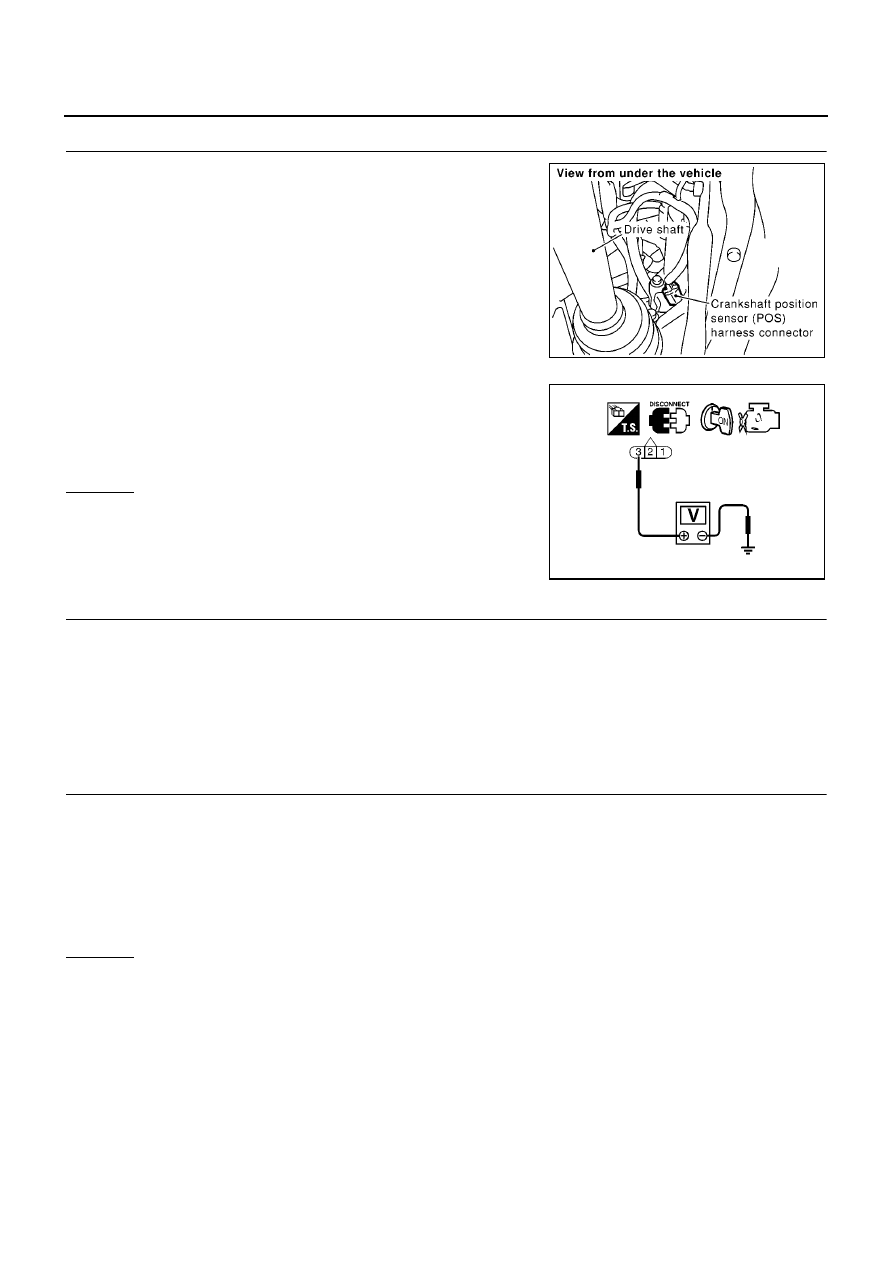Nissan Almera Tino V10. Manual - part 479

EC-742
[QG (WITHOUT EURO-OBD)]
DTC P0335 CKP SENSOR (POS)
2.
CHECK CKP SENSOR (POS) POWER SUPPLY CIRCUIT
1.
Disconnect crankshaft position (CKP) sensor (POS) harness
connector.
2.
Turn ignition switch “ON”.
3.
Check voltage between CKP sensor (POS) terminal 3 and
ground with CONSULT-II or tester.
4.
Also check harness for short to ground and short to power.
OK or NG
OK
>> GO TO 4.
NG
>> GO TO 3.
3.
DETECT MALFUNCTIONING PART
Check the following.
●
Harness connectors M71, F45
●
Harness for open or short between crankshaft position sensor (POS) and ECM
●
Harness for open or short between crankshaft position sensor (POS) and ECM relay
>> Repair open circuit or short to ground or short to power in harness or connectors.
4.
CHECK CKP SENSOR (POS) GROUND CIRCUIT FOR OPEN AND SHORT
1.
Turn ignition switch “OFF”.
2.
Disconnect ECM harness connector.
3.
Check harness continuity between ECM terminal 30 and CKP sensor (POS) terminal 1
Refer to Wiring Diagram.
4.
Also check harness for and short to ground and short to power.
OK or NG
OK
>> GO TO 5.
NG
>> Repair open circuit or short to ground or short to power in harness or connectors.
MBIB0103E
Voltage: Battery voltage
SEF509Y
Continuity should exist.